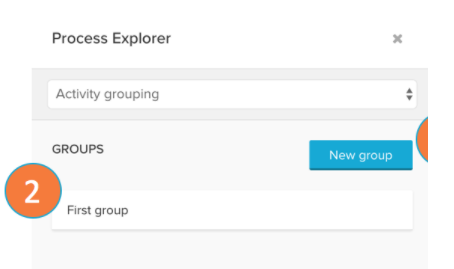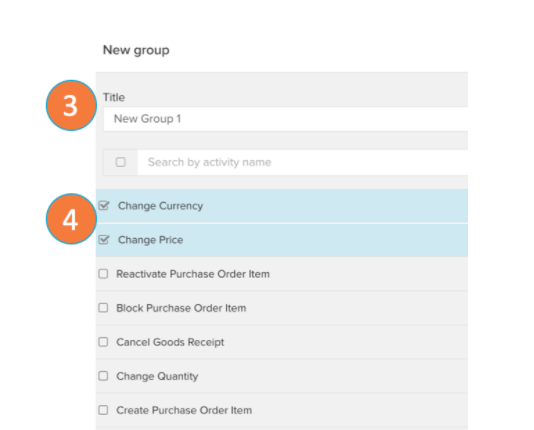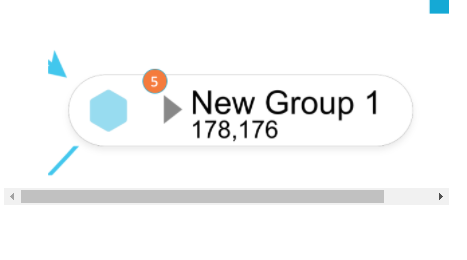Hello,
If I have a process that includes macro-activities, which include various activities within them, is it possible to have a view of the macro-process and the sub-process?
To better explain , I am attaching an example image, in which you can see that both the Macro-Activities and the Activities are listed in the activity table, and the ideal view that I would like to obtain is on the right.
Thanks for your attention and for those who will be able to answer me.
Hi Enrico,
By explorer view are you referring to the Process Explorer in Views?
If so, the focus of the Process Explorer is to show the most frequent activities and connections. Any number of Event Logs can be visualized. There are multiple types of transitions between Event Logs that can be defined.
For more information, can you please check our online documentation: https://help.celonis.cloud/help/display/CIBC/Process+Explorer
Hi @enrico.pugli12
Yes there is a way to view macro-process and sub-process in celonis.
You can do this by using activity grouping feature in Variant explorer.

- you can create a new group by clicking on the button 'New group'
- Existing groups are listed below and can be edited with a click on the list entry.
- On edit or creation of a new group you can define the name as per your choice.
- And select which activitie or subprocess need to be grouped together.
- The group will be shown in the Process Graph as a new Activity Node. You can collapse and expand the node.


Here you can see the play button after clicking on that you can expand the group.
Hope it helps.
Happy learning.
Img source: Celonis
Hi @enrico.pugli12
Yes there is a way to view macro-process and sub-process in celonis.
You can do this by using activity grouping feature in Variant explorer.

- you can create a new group by clicking on the button 'New group'
- Existing groups are listed below and can be edited with a click on the list entry.
- On edit or creation of a new group you can define the name as per your choice.
- And select which activitie or subprocess need to be grouped together.
- The group will be shown in the Process Graph as a new Activity Node. You can collapse and expand the node.


Here you can see the play button after clicking on that you can expand the group.
Hope it helps.
Happy learning.
Img source: Celonis
Hi Rohit,
thank you for your help and your answer.
I am familiar with the activity grouping function. Unfortunately the function is manual, i.e. I have to manually create the groups, selecting the activities, as you've showed me.
In my datalog I have about 200 Macro-Activities (i.e. 200 groups), each with 2-10 Activities, so the work would be too long and impractical. I was hoping there was an automatic way to group, directly reading the datalog.
Thanks for the help anyway
Yes - I am not sure how else to automate this task; other than what Rohit described.
Hi @enrico.pugli12 ,
I've recently implemented a similar solution. You can create a new column on your activity table during the SQL Transformation to include this activity grouping.
So you would have 2 columns related to the activities in your activity table , called "Activity" and "Macro_Activity"
Reload the data model and add a new process explorer. Go to Process Node->Custom Dimension and switch to the ACTIVITYTABLE."Macro_Activity".
If you want to make it flexible for the end-user, add a button dropdown with a variable linked to the Process Explorer.
Best,
Gabriel
Hi @gabriel.okaba11 ,
thank you for taking the time to answer me.
I had already thought about this solution and tried to implement it: the problem is that the timestamp (which is unique) is relative to the Activities, so when I go to the Macro-Activities vision I see many Reworks (Small example in the attached image). Conceptually it is correct, because I perform more activities belonging to the same Macro-Activity, but it is not what I would like to see.
I would like to see a linear flow as for the Activities taking only the timestamp of the first belonging to each Macro-activity.
Thanks anyway for the help and if you have other solutions they are appreciated.
Regards
Enrico
Hi Enrico,
This is exactly the outcome I've got. In this case, you should create another activity table (the DM accepts 2 activity tables- it is called multi-event log), with just the Macroactivities.
You can create this new Activity Table in Event Collection using SQL. For example, you can use the current one as a reference, group by macro activity and only enter the first occurrence of each macro activity. Best,
Best,
Gabriel




 Best,
Best,